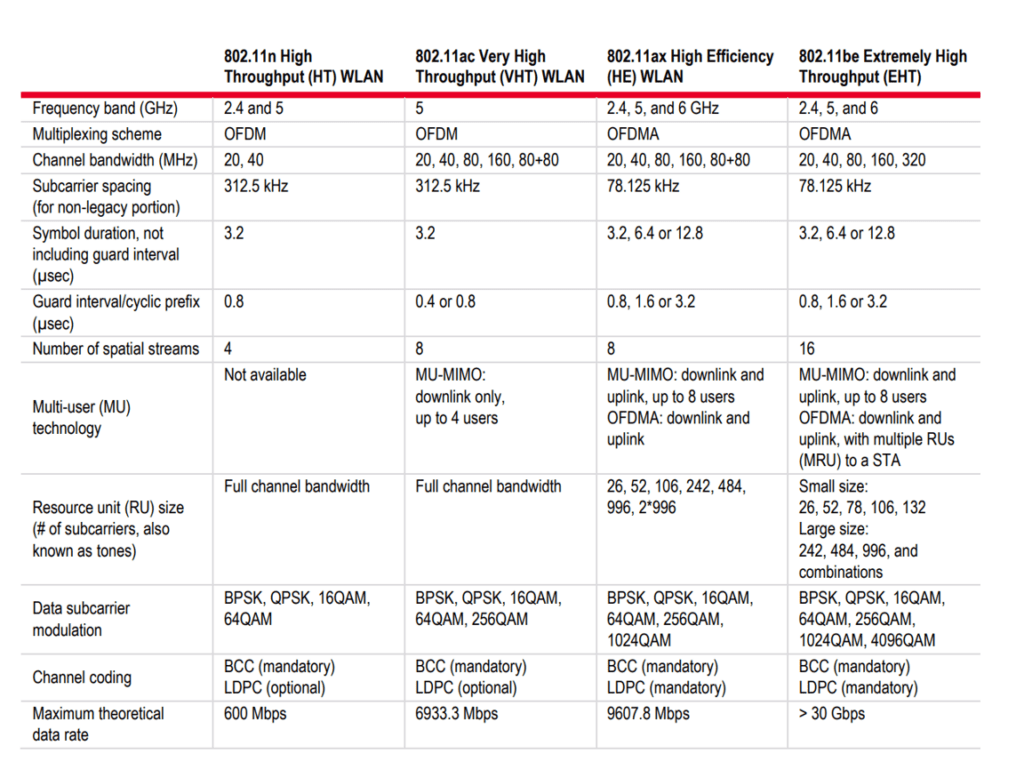Can the world go a day without using wireless connectivity? Most cannot because much of our daily activities depend on wireless solutions. The world depends on wireless connectivity — from jobs, school, or daily communications. Advancements in wireless connectivity have helped advance other technologies, research, and innovative ideas. Wireless devices push technology forward in an evolving world.
Today, there are high-performance wireless solutions such as 5G and Wi-Fi 5, and some industries are using 802.11ax, also known as Wi-Fi 6. Advancements in wireless solutions such as 6G, IEEE 802.11be, and Wi-Fi 7 are continuous and rapid. Although, with previous generations of wireless standards, one would think that since performance is improving, so would the ease of feasibility in meeting regulatory standards. This has proven to be not the case.
The performance of wireless solutions is improving, but meeting regulatory standards is becoming a challenge if not prepared correctly. To perform at a high capacity, users need to ensure they are testing with high-performance products that can meet new standards and regulations. For Wi-Fi 7, this is no different — first, let us understand what is new to the standard, the wireless signal challenges these new rules impose, and what type of test software would assist in resolving those challenges.
History of 802.11
Wireless local-area network (WLAN) products and systems began with 802.11b, 802.11g, and 802.11a standards, providing throughput enhancements over the original 802.11 standard introduced in 1997. Wireless technology continues to evolve by integrating the latest technologies to meet the requirements of new applications and the need for higher data rates. The goal is to improve spectrum utilization, throughput, and user experience.
The current WLAN standard, 802.11ax, is an evolutionary improvement to 802.11ac. It adds a significantly higher efficiency, capacity, and coverage for a better user experience, especially for dense deployment scenarios in indoor and outdoor environments such as stadiums, airports, and shopping malls. Unlike 802.11ac, 802.11ax operates in 2.4, 5, and 6 GHz bands. It employs technology building blocks like orthogonal frequency division multiple access (OFDMA) for high efficiency, 8×8 multi-user, multiple-input, and multiple-output (MU-MIMO) for high capacity, and uplink scheduling for increased capacity, efficiency, and better user experience. Other technologies, such as 1024 QAM modulation, improve throughput.
What Is New to 802.11be
While in the early development stage, 802.11be holds great promises. Many new features will significantly increase throughput and provide support for real-time applications. These features include 320 MHz transmission bandwidth, use of 4096 QAM modulation, and enhancements to MIMO with more spatial streams. Like 802.11ax, 802.11be will also operate in 2.4, 5, and 6 GHz frequency bands. These new features are a vast improvement over the previous generation.
The new wireless local area network (WLAN) devices should be backward compatible and coexist with legacy IEEE 802.11 devices operating in the same band. Table 1 compares key physical layer (PHY) technologies of 802.11n, ac, ax, and be.
Table 1. Physical layer (PHY) comparison of 802.11n, 802.11ac, 802.11ax, and 802.11be
802.11be regulatory challenges
However, with new features such as backward compatibility, coexistence, and 4096 QAM modulation, there will be signal challenges in meeting the regulatory standard.
Let us take the 4096 QAM modulation as an example. Compared to previous generation 802.11ax, the QAM modulation is 3 dB more stringent than the error vector magnitude (EVM) requirement from
-38 dB for 802.11be versus -35 dB for 802.11ax. With a challenging EVM requirement, error contributors such as noise, non-linearity of power amplifier, phase noise, and more will play a major factor. These changes require high-performance signal analysis test software and equipment to meet a lower EVM floor analysis.
EVM analysis and measurements are critical key metrics used to evaluate signal quality. Measuring one signal with the right EVM can pose its own difficulties. However, measuring multiple signals simultaneously to demodulate and evaluate the EVM along with reducing any error contributors can pose a significant challenge, especially when pinpointing the error’s location.
Software plays a critical role in testing new standards, such as Wi-Fi 7. As standards evolve, so do the tools used to measure and test. Software is continuing to make advancements to help improve wireless connectivity.
Signal analysis test software
Measurement software for signal analysis, signal generation, and even automation provides a unique solution to enable a specific result. It is important to choose software that enables a future-proof solution.
Designers can now gain an advantage over the latest wireless signals with software for 802.11n/ac/ax and 802.11be modulation analysis. Software options provide an advanced troubleshooting and evaluation toolset designed to handle the challenge of analyzing legacy and new wireless signals, covering technologies such as MU-MIMO and OFDMA used in the latest standards. 802.11 standards are among over seventy-five signal and modulation types that a single software can support.
The appropriate test software enables users to explore virtually every facet of a signal and optimize even the most advanced designs. The software helps engineers reduce complexity as they assess design trade-offs.
The history of wireless standards has shown there is no slowdown in improvements and performance. Reviewing the regulation standards and choosing software to help solve those issues is important. Let us look at the new 4096 QAM modulation requirement for Wi-Fi 7.
Phase noise is often the dominant cause of EVM issues in OFDM systems. Vector signal analysis software enables users to characterize phase noise within the 802.11be demodulation measurement using an OFDM channel called phase noise spectrum trace. This method evaluates signal quality and error vector measurements of transmitted signals. For all wireless standard formats, signal analysis software also records error vector spectrum, error vector time, common pilot error, channel frequency response, and more.
Figure 1 is an example of software that allows engineers to view an unlimited number of simultaneous traces, showing results such as EVM versus frequency or time, equalizer channel frequency response, common pilot error, and phase noise spectrum.

The software can also assist with the new MIMO regulations, such as modulation quality measurement, because the IEEE 802.11 specification requires a spectral emission mask (SEM). SEM is mainly a measure of interference within the wireless band. The software can provide SEM measurements with a quick setup for 802.11be 40 MHz (shared), 160 MHz, and 320 MHz bandwidth.
Software solutions are an all-important diagnostic tool for wireless connectivity testing, especially for Wi-Fi 7. The software enables more advanced testing features, such as cross-correlated EVM (ccEVM), to improve EVM performance.
ccEVM is a technique used to extend the dynamic range of a receiver for best EVM performance by using two receivers to capture and demodulate the same signal independently. This process also performs cross-correlation on the error vectors to cancel out uncorrelated noise added by the receivers, resulting in a much lower EVM. This method primarily causes the ccEVM value to contain the noise from the device under test or, in the case of an amplifier, noise coming from the signal source and the device under test.
Figure 2 is an example of using ccEVM software. In this example, engineers use a signal generator and two receivers along with ccEVM to result in a 6 dB EVM improvement to the 802.11be WLAN signal.

Conclusion
We can continue to go through all the features that software brings to a wireless connectivity testing world, but the list is extensive, and the result is the same. Software is critical in helping engineers test standards such as Wi-Fi 7 and any newly released wireless standards. Remember, society cannot go a day without wireless devices because it is part of our daily life.
High-performance solutions enable easier testing and evaluation to ensure wireless devices meet regulations. Software enables engineers to analyze, test, and resolve critical issues in wireless connectivity.
Learn more about IEEE 802.11be signal test software with Keysight’s PathWave 89600 vector signal analysis(VSA) software.




